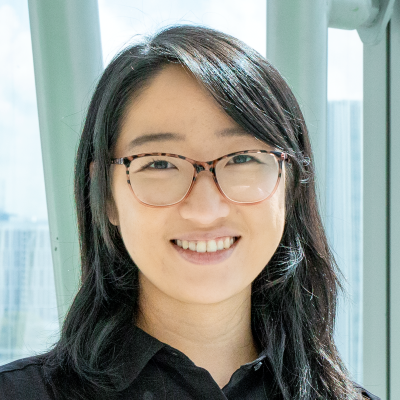
Huan Ting ONG
Research Fellow, Mechanobiology Institute, National University of Singapore
ong.ht@nus.edu.sg
Level 9 T-Lab
National University of Singapore
5A Engineering Drive 1
Singapore 117411
Huan Ting Ong
Research Fellow
Principal Investigator
Research Areas
Cell-cell & cell-matrix interactome; Tissue nanoenvironment; Tissue engineering and regenerative medicine
Qualifications
Forensic Science BForSc, Biomedical Science BSc(Hons), PhD
Biography
Background:
Huan Ting Ong completed her Bachelor’s degrees (BSc(Hons) and BForSc) at Murdoch University, Western Australia (2010-2015), and subsequently earned her PhD from the University of Western Australia (2017-2021). In Prof Rodney Dilley’s lab at the Ear Science Institute Australia (ESIA), her doctoral work investigated stem cells and their potential roles in wound healing of the human eardrum, specifically studying the cell-cell and cell-material interactions during wound healing. She then joined Dr Filippo Valente’s team at ESIA as a Postdoctoral Research Fellow (2021-2023) working on the development of biomaterials for use in chronic middle ear disease, investigated the pathophysiology of middle ear diseases, and established models for drug screening and discovery to improve eardrum repair.
Research interest:
Fascinated to better understand cell-cell and cell-matrix interactions spatially in diseased states, she joined Dr Jennifer Young’s Soft Nano-Biomaterials Lab at MBI in 2023, co-supervised by Dr Chii Jou (Joe) Chan, to interrogate the spatiotemporal regulation of matrix alterations in ovarian ageing dysfunction.
Research Interests
• Cell-cell & cell-matrix interactions
• Tissue ECM dynamics
• Tissue engineering and regenerative medicine
• Spatial omics
Technical Skills
• Cell culture (e.g. primary cell isolation, 3D cultures, co-cultures, tissue engineering, functional assays, in vitro disease modelling)
• Tissue biology (e.g. vibratome sectioning, cryosectioning, IHC, spatial transcriptomics)
• Molecular biology (e.g. RNA extraction, qRT-PCR, RNA sequencing, bioinformatics)
Selected Publications
-
Tomida K#, Ong HT#, Young JL, Chan CJ. Capturing ovarian dynamics through spatial profiling of the mechano-microenvironment. Semin Cell Dev Biol (2025) 175:103642 #Co-first author
-
Ong HT#, Sriram M#, Susapto HH, Li Y, Jiang Y, Voelcker NH, Young JL, Holle AW, Elnathan R. The rise of mechanobiology for advanced cell engineering and manufacturing. Adv Mat (2025) 2501640 #Co-first author
-
Ong HT*, Prêle CM, Dilley RJ. Using RNA-seq to identify suitable housekeeping genes for hypoxia studies in human adipose-derived stem cells. BMC Mol Cell Biol (2023) 24(1):16 *Corresponding author
-
Hou R, Denisenko E, Ong HT, Ramilowski JA, Forrest ARR. Predicting cell-to-cell communication networks using NATMI. Nat Comm (2020) 11(1):5011
-
Ong HT, Dilley RJ. Novel non-angiogenic role for mesenchymal stem cell-derived vascular endothelial growth factor on keratinocytes during wound healing. Cytokine Growth Factor Rev (2018) 44:69-79
-
Ong HT, Redmond SL, Marano RJ, Atlas MD, von Unge M, Aabel P, Dilley RJ. Paracrine activity from adipose-derived stem cells on in vitro wound healing in human tympanic membrane keratinocytes. Stem Cells Dev (2017) 26(6):405-418
-
Liew LJ, Ong HT, Dilley RJ. Isolation and culture of adipose-derived stromal cells from subcutaneous fat. In: Rittié L (eds) Fibrosis. Methods in Molecular Biology (2017) 1627:193-203
Other Professional Involvements
Teaching:
AY24/25 S1: BN5302 Organs in a Dish: Organoid Bioengineering, NUS – Co-lecturer
AY23/24 S2: BN2201 Quantitative Physiology for Bioengineers, NUS -Guest lecturer
Professional Involvements:
MBI Postdoc Committee – Co-chair
AWTRS – Committee Member


